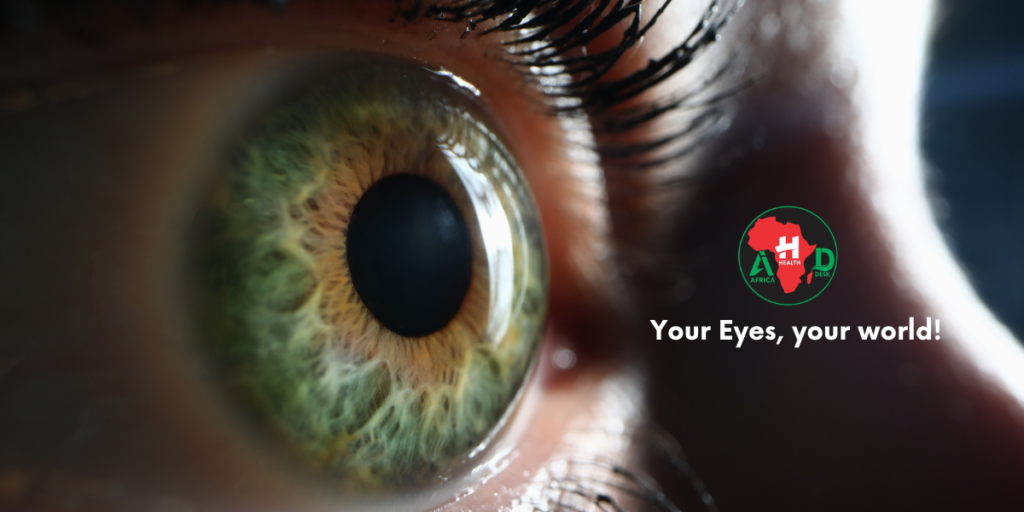World Sight Day, observed on October 10, highlights the vital theme of children’s eye health this year. The theme, “Children, Love Your Eyes,” emphasizes the importance of addressing the specific needs of children’s vision. Uncorrected vision problems can significantly hinder education and social integration; however, straightforward solutions like spectacles can create a profound impact. A key approach to safeguarding children’s eye health is to ensure access to quality, affordable spectacles and comprehensive, people-centered services for all who require them.
World Sight Day serves as an opportunity to dispel misconceptions about vision and to promote a future where all children can wear glasses or other corrective measures without facing social stigma.
Protecting the vision of our future generations
There is a concerning increase in the prevalence of myopia, commonly known as short-sightedness, which has emerged as a significant global issue. Experts are sounding the alarm, stating that the world is currently experiencing a “myopia epidemic.” In Africa, the incidence of childhood myopia has nearly doubled since 2010, with projections suggesting it could triple by 2050. Although the current rate of myopia in Africa is relatively low, this rising trend poses serious implications. Many people view myopia as a minor issue that can be easily corrected with glasses; however, its consequences can be far-reaching, including a heightened risk of blindness, particularly when it develops early in a child’s life.
According to researchers from the Lions Eye Institute, children who develop myopia early in life are at the highest risk for progressing to severe myopia. This progression significantly increases their risk of serious eye conditions like retinal detachment, glaucoma, and myopic macular degeneration, all of which can lead to vision loss or blindness. For most people, myopia means wearing glasses or contact lenses, but for some, it could mean permanent damage to their vision.
Many parents believe that limiting screen time, especially on mobile phones, is the key to protecting their children’s eyesight. However, researchers have found that small screen use isn’t the main issue. The real concern is the lack of time spent outdoors. In addition, children are spending more time engaging in ‘near work’—activities that require focusing on close objects, such as using larger screens or reading books. This underscores the vital role that parents, caregivers, and educators play in safeguarding the vision of future generations.
Professor David Mackey AO, lead researcher at the Lions Eye Institute, emphasizes: “Preschool and primary school children at greatest risk will need interventions, which include increased time outdoors, low-concentration atropine drops, peripheral defocus lenses, and possibly other treatments being investigated.”
What Is Causing the Myopia Epidemic?
There is no single cause for the rising rates of myopia. According to Professor Mackey, a combination of genetic and environmental factors plays a role. Key contributors include:
- Lack of time spent outdoors: Exposure to natural light is essential for eye health.
- Increased time spent on larger screens: Computer screens and other devices used for long periods can strain the eyes.
- Increased time in education: The modern emphasis on academic work often means children spend more time indoors, focusing on near tasks like reading and writing.
In a study conducted by the Lions Eye Institute, it was found that while screen time on smaller devices like smartphones didn’t significantly affect myopia, larger screens and reading books did. The lack of outdoor exposure combined with these activities is leading to more cases of myopia in children.
Professor Mackey advises: “Our recommendation to families is simple: increase the amount of time your kids spend outside, aiming for two hours a day, but follow SunSmart guidelines. It is best to spend time outdoors early in the morning or late in the afternoon, as the UV Index is below 3 during those times.”
The Importance of Early Detection
For children at high risk, early detection is critical. Lions Eye Institute researchers, led by Professor Mackey and Dr. Samantha Lee, have developed a test to identify children who are likely to develop severe myopia. They propose that axial length (the measurement from the front to the back of the eye) should be routinely measured in children, much like height and weight measurements. “We need to identify children with severe myopia earlier in life so we can intervene and avoid a lifetime of challenging eye disease leading to blindness,” says Professor Mackey.
While some children naturally have longer eyes, a rapid increase in axial length over time is a strong predictor of future myopia. Early detection allows for interventions that can slow the progression of the condition, potentially reducing the risk of long-term damage.
The Lions Eye Institute is urging ophthalmologists and optometrists who work with children to adopt this simple test as part of standard preschool screenings. If widely implemented, this could help prevent a significant number of cases of myopia from progressing to severe stages that may lead to blindness.
World Sight Day is a perfect opportunity to raise awareness about the importance of children’s eye health. The “myopia epidemic” is a growing public health concern, but with early intervention and simple lifestyle changes, we can protect our children’s vision. Encouraging more time outdoors, limiting near work on large screens, and adopting routine eye screenings are practical steps that can make a big difference.
Parents, healthcare providers, and educators should work together to promote better eye health for children. By taking action now, we can help reduce the risk of short-sightedness and prevent potentially severe outcomes, such as blindness, in the future.
“There’s a global myopia epidemic”, and we need to act now to protect our children’s sight and save their future!
On this World Sight Day, what would you be doing towards improving children’s eye health?
One of the commonest causes of blindness is Glaucoma. Watch the video below to learn more about Glaucoma,
Happy World Sight Day 2024!

